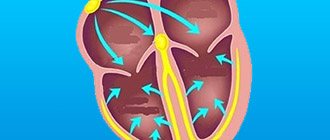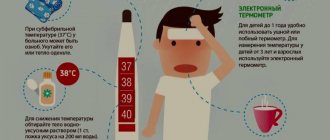Winter is in no hurry to come to Moscow, and the off-season, which lasts until December, “delights” the townspeople with unpredictable weather. In such conditions, you can very easily become hypothermic and contract a respiratory disease. If ARVI manifests itself as an increase in temperature, the patient will rush to see a family doctor or a paid therapist in Moscow. But in the absence of it, no one, as a rule, seeks professional medical help. And in vain.
In fact, even a mild cold should not be ignored. Patients perceive the absence of fever during ARVI as an opportunity to endure the disease on their feet, without concentrating too much on their well-being. Although in fact it may not be harmless at all, but requires, at a minimum, compliance with the home regime.
Why does ARVI selectively affect people?
Having been chilled outside, we try to warm up at home with hot tea and take a bath, but, unfortunately, these simple but effective procedures do not help everyone. This fact is explained by the general health of a particular person. Hypothermia of the body only triggers the mechanism of a cold, but the nature of the further development of the disease is determined by other reasons.
- A hypothermic body is easily affected by respiratory viruses, including the influenza virus. Entering into a favorable environment, pathogenic microflora begins to actively multiply.
- Susceptibility to infection is largely determined by the state of the immune system. For example, chronic diseases significantly weaken the body’s ability to fight viruses and bacteria that have entered it.
- Patients with enlarged tonsils or with constantly inflamed sinus mucosa are much more likely to be exposed to ARVI. Hypothermia will cause an exacerbation of chronic diseases in them.
- The state of the gastrointestinal tract also affects the level of immunity. The likelihood of catching a cold increases significantly with dysbiosis caused by taking antibiotics or internal causes.
- It is no secret that the likelihood of contracting ARVI increases when a person is in a stressful situation and experiences strong psycho-emotional stress.
The body's reaction to the active activity of pathogenic microflora will also be different.
University
→ Home → University → University in the media → A cold is not as terrible as its consequences
The incidence of acute respiratory tract infections is increasing worldwide. This is due to increasing environmental pollution, irrational use of antibiotics, household allergies, smoking, deterioration of the immune system, and unfavorable social factors. Against this background, pulmonologists note with regret the increase in the number of chronic diseases, mainly pneumonia and bronchitis. Most often they occur after repeated respiratory infections, especially when patients, feeling better, voluntarily stop treatment. ARVI is perhaps the most common diagnosis of the autumn-winter season. Maybe that's why he is perceived as absolutely 'not scary'. A person suffers from a so-called cold on his legs over and over again, but once again he is surprised: where did he get bronchitis or pneumonia from? It seemed like he was doing everything as always: aspirin, something for a cough... About 200 varieties of viruses are known that cause ARVI - acute respiratory (respiratory tract) viral infections. What they all have in common is that they are transmitted by airborne droplets, have the same symptoms, and are not treated with antibiotics. The most famous of them is the influenza virus. The symptoms of ARVI are familiar to everyone: fever, runny nose, dry cough, headache, general weakness. Actually, the treatment of ARVI consists of the treatment of these manifestations. Temperature requires special attention. It is an indicator that the body is fighting infection. It is the increase in temperature during ARVI that helps kill the causative agent of the disease. In this condition, a person should remain in bed (under no circumstances try to “overcome” a cold on the legs), drink more - drinking plenty of fluids helps remove toxins from the body that are formed during illness. People handle heat differently. More often, in order to minimize the discomfort associated with fever, they try to fight it - this is not at all difficult, because there are dozens of antipyretic drugs in pharmacies. Their use 'blurs' the clinical picture of the disease. The biological significance of fever is the activation of the body's immune (defense) reactions. Increased body temperature prevents the proliferation of viruses. But if you have a fever for more than three days and your temperature is 38°C or higher, then this is a serious sign that bacterial complications have joined ARVI (acute sinusitis, otitis media, bronchitis, pneumonia). And they require other treatment, including antibiotics. If the temperature is artificially reduced with medications, diagnosis and treatment may be delayed. All of the above applies to adults; in children, approaches to diagnosis and treatment are somewhat more complicated. You need to see a therapist. He will prescribe treatment, if necessary, additional examination, and refer you to a specialist. Every year, after the winter flu epidemic, new and new legions are added to the army of constantly coughing people. The production of a small amount of sputum and a slight cough are usually of little concern. Many people quickly get used to them and consider them to mean nothing. But coughing and sputum production are signs that allow one to suspect trouble, and more often these are symptoms of bronchitis (possibly already chronic) or pneumonia. These diseases also involve the cardiovascular system in the process - the so-called cor pulmonale is formed. About 7% of the adult population suffers from chronic lung diseases. Chronic cor pulmonale develops in approximately 3% of these patients, and in the overall structure of mortality from congestive heart failure, chronic cor pulmonale accounts for 30% of cases. The disease called cor pulmonale is very insidious; it may not manifest itself with special symptoms until a certain time. That is why timely diagnosis is a decisive factor in curing the patient. Pulmonary heart is a condition of overload and hypertrophy of the walls of the right ventricle of the heart as a result of increased pressure in the pulmonary circulation. Chronic cor pulmonale can develop over many years. I give the floor to a colleague who is competent in this problem. Pulmonary heart Diseases of the bronchi and lungs have a significant impact on the state of the cardiovascular system. Damage to the heart and a complex of circulatory disorders caused by a disorder of the bronchopulmonary system are called cor pulmonale. This condition develops as a result of about seventy diseases: most often (80% of cases) - diseases of the bronchi and lungs (chronic obstructive pulmonary disease, pneumoconiosis, sarcoidosis, tuberculosis, etc.); rarely - diseases affecting the chest and diaphragm (curvature of the spine, multiple injuries to the ribs with limited mobility of the chest, Pickwick syndrome in obesity, pleurisy); sometimes - as a result of primary damage to the pulmonary vessels (primary pulmonary hypertension, recurrent thromboembolism of the branches of the pulmonary artery, etc.). The main mechanism for the development of cor pulmonale is considered to be an increase in pressure in the arterial vessels of the pulmonary circulation and pulmonary artery (pulmonary hypertension). Impaired blood oxygen saturation causes a narrowing of the blood vessels in the lungs, their restructuring and insufficient blood supply to the tissues (tissue hypoxia). In addition to changes in blood vessels and lung tissue, the volume of circulating blood increases, the number of blood cells increases, and its viscosity increases. Against the background of the development of respiratory failure, changes occur in the right ventricle of the heart: metabolic disorders occur in the heart muscle, then its hypertrophy (increase in mass). The right chambers of the heart, experiencing increased stress when pushing blood into the pulmonary artery, expand, their contractility decreases - heart failure develops. If signs of heart failure appear suddenly, within a few hours, the development of cor pulmonale is called acute; within a few weeks - subacute; for several months, years - chronic. Chronic cor pulmonale develops almost imperceptibly over many years, without obvious clinical signs of circulatory failure. Anyone who has diseases of the bronchi and lungs must undergo examinations to identify signs of chronic pulmonary heart disease. ECG and X-ray methods reveal signs of hyperfunction and/or hypertrophy of the right ventricle. An informative method for measuring pressure in the pulmonary artery and assessing the condition of the heart muscle is echocardiography. With decompensated cor pulmonale, a person may feel pain in the heart area, in the right hypochondrium, swelling appears in the legs and/or feet, and the nature of shortness of breath changes. A common sign of cor pulmonale is rhythm disturbances: palpitations (tachycardia), irregular contractions. Undoubtedly, treatment of chronic pulmonary heart disease must begin as early as possible - with measures to prevent exacerbations of bronchopulmonary infection. It is very important to quit smoking (active and passive!). It is necessary to avoid hypothermia and prevent acute respiratory diseases. In case of heart failure, it is necessary to limit physical activity and follow a diet with limited salt and liquid. In the treatment of pulmonary heart disease, medications are used that improve blood circulation, normalize metabolic disorders, restore the structure of the heart and blood vessels, and lower blood pressure (systemic and in the pulmonary artery). If indicated, diuretics are added, using them with caution to prevent a significant decrease in the volume of circulating blood and its thickening. Other drugs are prescribed according to indications (cardiac glycosides, prostaglandins, vasodilators, etc.). Hypoxemia and hypoxia (low oxygen content in the blood and, as a result, in the tissues of the body), as a rule, lead to an imbalance of magnesium and potassium in the body. The use of diuretics and cardiac glycosides aggravates the deficiency of these vital ions and causes a deterioration in metabolic processes in the myocardium, as well as cardiac arrhythmias. The administration of drugs containing potassium and magnesium (panangin) helps improve myocardial metabolism and normalize heart rhythm. In the treatment of respiratory failure in cor pulmonale, the use of oxygen therapy is of great importance. Evgenia Trisvetova, Doctor of Medical Sciences, Professor of the 2nd Department of Internal Diseases of the Belarusian State Medical University Rule for everyone: self-medication for the flu is unacceptable, all medications must be prescribed by a doctor This attitude may raise doubts, especially in conditions of a full-blown epidemic, when clinic doctors have terrible time pressure. But it is difficult to predict the course of the flu, and complications can be varied, including life-threatening and developing at lightning speed. This danger distinguishes influenza from other acute respiratory diseases. We will try to outline the reasonable actions of a person sick with influenza or ARVI before the first visit to the local doctor. When the first symptoms occur, it is recommended: 1. Drink plenty of fluids - tea with lemon, cranberry or lingonberry juice, alkaline mineral waters (Borjomi with milk, etc.); However, it should be remembered that excessive fluid intake is contraindicated in patients with chronic heart failure. 2. For high hyperthermia (above 38°) - antipyretics: paracetamol, ibuprofen in an age-appropriate dosage; aspirin - only for adults. 3. To facilitate nasal breathing - vasoconstrictors. It is necessary to remember about the development of atrophy of the nasal mucosa with their long-term use and the contraindication of these drugs for hypertension. Vasoconstrictors reduce swelling of the mucous membrane and improve the outflow of mucus from the paranasal sinuses, which prevents the development of sinusitis. Take seriously the advice on how to blow your nose correctly: clear each nostril in turn, while pressing the other with your thumb to the nasal septum. This must be done every time before putting drops into your nose. You can’t “sniff”: the viruses and inflammatory products contained in the nasal secretions enter the body, increasing intoxication. 4. Means for thinning and removing sputum (mucaltin, licorice root, marshmallow tincture, bromhexine, etc.). 5. If the cough is very strong, dry, painful, and prevents you from sleeping, use antitussives (mainly in pediatric practice). 6. Children over 2 years of age and adults in the first days of illness benefit from steam inhalations with infusions of chamomile, calendula, mint, sage, St. John's wort, pine buds, and a 1-2% soda solution (wait with this at high temperatures). 7. Taking ascorbic acid and multivitamins. All this is used to alleviate the typical symptoms of influenza and ARVI and does not affect the reproduction of the pathogen. The development of any complications of influenza requires emergency hospitalization and intensive treatment. Antibacterial drugs are prescribed only by a doctor in the presence of complications, as well as in the presence of chronic foci of infection (chronic sinusitis, pyelonephritis, etc.). According to one study conducted in Russia, three-quarters of surveyed primary care physicians were willing to use antibiotics in adults for influenza, starting from the first days of the disease. They considered the purpose of the prescription to be to prevent the occurrence of bacterial complications. But responsibility for the erroneous prescription of antibiotics that do not affect viruses should not be placed solely on the doctor. Most of the respondents pointed to pressure from the patient or his relatives, who believe that taking antibiotics is mandatory for fever. Question and answer I’m already used to coughing in the morning - I’ve been smoking for a long time. Recently, when walking fast, shortness of breath and stabbing pain in the heart appear. If you quit smoking, will it help you feel good again? (I.P. MOROZOV) - Undoubtedly, smoking aggravates your condition and you need to get rid of your addiction. Shortness of breath and pain in the heart area can occur with many heart diseases. However, a long history of pulmonary disease (smoking and coughing) indicates the possible development of cor pulmonale. You need to see a doctor. I have had a curvature of the spine since childhood. From the doctor I heard that my heart is “pulmonary”. However, I don’t smoke, I haven’t suffered from serious lung diseases... (Nina EGOROVA) - 'Cor pulmonale' is a collective concept that is used to characterize changes (structural and functional) that occur in the vascular bed of the pulmonary circulation and in the heart. These disorders can develop due to curvature of the spinal column. Are there early signs of heart damage in lung diseases? (TRIFONOVA Galina Sergeevna) - Unfortunately, subjective signs indicating dysfunction of the cardiovascular system appear at a later date. At the same time, it is known that prevention of exacerbations of bronchopulmonary infections, timely treatment of lung diseases and the use of medications that improve blood circulation in the pulmonary circulation, as well as normalize metabolic processes in the heart muscle, lengthen the period of normal heart activity. In my childhood I suffered from pulmonary tuberculosis. I undergo annual examinations; there have been no signs of process activity for many years. However, shortness of breath, enlarged liver, and swelling in the legs appeared. Doctors believe that the cause is heart damage due to a long-standing tuberculosis process in the lungs. Is this really possible after so many years of prosperity? (Igor KOROTCHENYA) - In the case of a widespread sclerotic process in the pulmonary tissue as a result of an infectious or non-infectious lung disease, circulatory disorders occur in the pulmonary circle and a pulmonary heart can form. The process of formation of chronic pulmonary heart lasts for years. I suffered from pneumonia several times as a child. Now (I am a 2nd year student) I have been diagnosed with bronchial asthma. I passed the winter session well, but was ill for two weeks: I was coughing, short of breath, and had pain in my heart. In addition to asthma medications, the doctor advised me to take potassium and magnesium supplements to improve metabolic processes in the heart. Is taking heart medications justified? (Maria Selkhanovich) - With bronchial asthma, attacks of bronchial obstruction occur, which lead to changes in the gas composition of the blood and metabolic disorders in the tissues of many organs. The use of drugs including magnesium and potassium has a normalizing effect on metabolic processes in the myocardium. In addition, since a tendency to bronchospasm can occur if the magnesium content in the body’s cells is reduced, potassium and magnesium supplements have a positive effect by reducing the reactivity of the bronchi.
doctor Alexander Nefagin Vecherniy Minsk , February 1, 2008
Share
Why do cold symptoms vary from person to person?
The manifestations of the disease depend on the combination of the above factors. As a rule, a person may initially have a sore throat, a runny nose and a fever. Most patients consider only a rise in temperature to be a more or less serious symptom, and in its absence, sore throat, runny nose and even cough are ready to endure on their feet. The idea that bronchitis and even pneumonia may be hidden behind a cough occurs to the average patient only at elevated temperatures. Why doesn’t the immune system respond by increasing it in all cases?
- The severity of the reaction is determined by the type of pathogen that has entered the body. Thus, the body almost always reacts to infection by strains of influenza and some other aggressive viruses with an elevated temperature.
- An increase in temperature means that the immune system has begun to do its job, producing antibodies. But in some patients with weakened immunity, an immune response is not formed, and there is no fever during ARVI. This may mean that the body is infected with a rather dangerous virus that it is not able to fight on its own.
- Modern “anti-cold” pharmaceutical drugs based on paracetamol, which people with colds like to prescribe to themselves, quickly relieve cold symptoms, especially quickly coping with elevated temperatures. But they do not destroy pathogenic viruses and do not strengthen the immune system, which means they do not help the body overcome ARVI.
The cardiologist named the reasons for the rapid heartbeat
SM-Clinic cardiologist Daria Sergeeva told Izvestia what could be the cause of rapid heartbeat or tachycardia.
Vascular disease: amid the heat, the number of exacerbations in heart patients has increased
How to avoid hypertension and arrhythmia due to climatic anomalies
Tachycardia is considered a pulse (heart rate) of more than 100 beats per minute. It can have many causes - both related to the condition of the heart itself (cardiac causes) and related to disorders of other organs and systems of the body (extracardiac causes).
The most common is sinus tachycardia. With it, impulses in the heart occur in a normal way, just with a high frequency. Normally, sinus tachycardia occurs during exercise, stress, pregnancy, and also occurs in children, adolescents, and people with low blood pressure.
Sinus tachycardia can be a symptom of diseases such as hypothyroidism and thyrotoxicosis (thyroid disease), a manifestation of anemia, hypertension, and can also occur after drinking alcohol or smoking.
“A very dangerous and common form of tachycardia is atrial fibrillation (atrial fibrillation). With atrial fibrillation, the formation of impulses in the sinus node is disrupted and the heart contracts irregularly. In this case, the contraction frequency can be very high (up to 200 beats/min). Usually, with paroxysm of atrial fibrillation, shortness of breath, weakness, and dizziness occur. However, some patients may not pay attention to their rapid, irregular pulse,” said Sergeeva.
This type of arrhythmia is dangerous in the absence of timely medical care and can lead to stroke and heart failure, the cardiologist said.
Another type of arrhythmia is paroxysmal supraventricular tachycardia, when an attack of palpitations begins suddenly, the heart contracts rhythmically, but at a very high frequency - 150–200 beats per minute. During an attack, severe weakness, shortness of breath, darkening of the eyes usually develop, and the person may lose consciousness. This arrhythmia occurs more often in young people and is associated with the presence of additional pathways in the heart. They are present from birth, but over time they can “wake up” and lead to tachycardia.
“The most dangerous type of tachycardia is ventricular tachycardia and ventricular fibrillation. With this tachycardia, impulses are generated in the ventricles of the heart - in those parts of the heart that are not at all adapted to such work. The heart cannot contract effectively, the blood flow rate critically decreases, the person loses consciousness, breathing stops, and the pulse cannot be detected—clinical death develops. This situation requires immediate resuscitation measures,” Sergeeva explained.
This type of arrhythmia usually develops in people who already have various heart diseases - coronary heart disease, heart failure, acquired heart defects, myocarditis, as well as in those who have had a myocardial infarction, cardiomyopathy and other diseases in the past.
However, there are a number of congenital heart diseases that manifest themselves exclusively as life-threatening ventricular tachycardias, which lead to sudden cardiac death in the complete absence of other symptoms. These include arrhythmogenic right ventricular myocardial dysplasia, long QT interval syndrome, short QT interval syndrome, Brugada syndrome, catecholaminergic polymorphic ventricular tachycardia and others.
On July 21, it was reported that, based on research by scientists at the California Institute, coffee is a useful drink for the prevention of arrhythmia.
Each additional cup of coffee throughout the day is said to further reduce the risk of arrhythmia by 3%. This applies to heart rhythm disorders such as atrial fibrillation and supraventricular tachycardia.
Features of the course of ARVI without fever
A respiratory viral infection is localized in the nasopharynx and after a couple of days it manifests itself as a certain discomfort. Following tickling and sneezing, copious watery discharge from the nose appears, which after a couple of days becomes mucous, sometimes mixed with blood and pus.
Medical statistics indicate that the main symptom of ARVI, with or without fever, is a runny nose. Four out of ten patients experience a sore or sore throat, and six out of ten subsequently develop a cough, which has certain characteristics associated with a cold.
Dry and superficial, it is rather a reaction to tickling. But with weak immunity, there is a possibility of it spreading to the upper respiratory tract. Having descended into the trachea and further into the bronchi, the infection can finally cause fever. Although recently there have been frequent cases of bronchitis and pneumonia occurring without a significant increase in temperature. Needless to say, when symptoms of ARVI complications appear in children, they should definitely be shown to a good pediatrician?
If the sick person also suffers from muscle pain and aches throughout the body, then his temperature will probably rise greatly, since in this case, influenza will most likely be diagnosed - the most serious of acute respiratory viral infections.
When should a sick person see a doctor?
A healthy body can and should overcome a mild ARVI that occurs without serious symptoms in 5–7 days. If within a week the symptoms do not go away or even worsen, we can almost certainly talk about a complication of a seemingly unimportant disease.
The patient may experience symptoms of laryngitis or pharyngitis, tonsillitis, rhinitis, signs of inflammation of the paranasal sinuses - sinusitis or sinusitis, otitis, tracheitis, bronchitis and even pneumonia. In this case, even if the temperature has not risen, you should definitely contact either your family doctor or a good ENT doctor in Moscow.
Doctors include dangerous symptoms:
- difficulty or increased breathing;
- the appearance of wheezing;
- long lasting cough;
- chest pain;
- significant increase in temperature;
- severe pain in the forehead;
- fainting state;
- confused consciousness, inability to navigate in space;
- severe vomiting.











